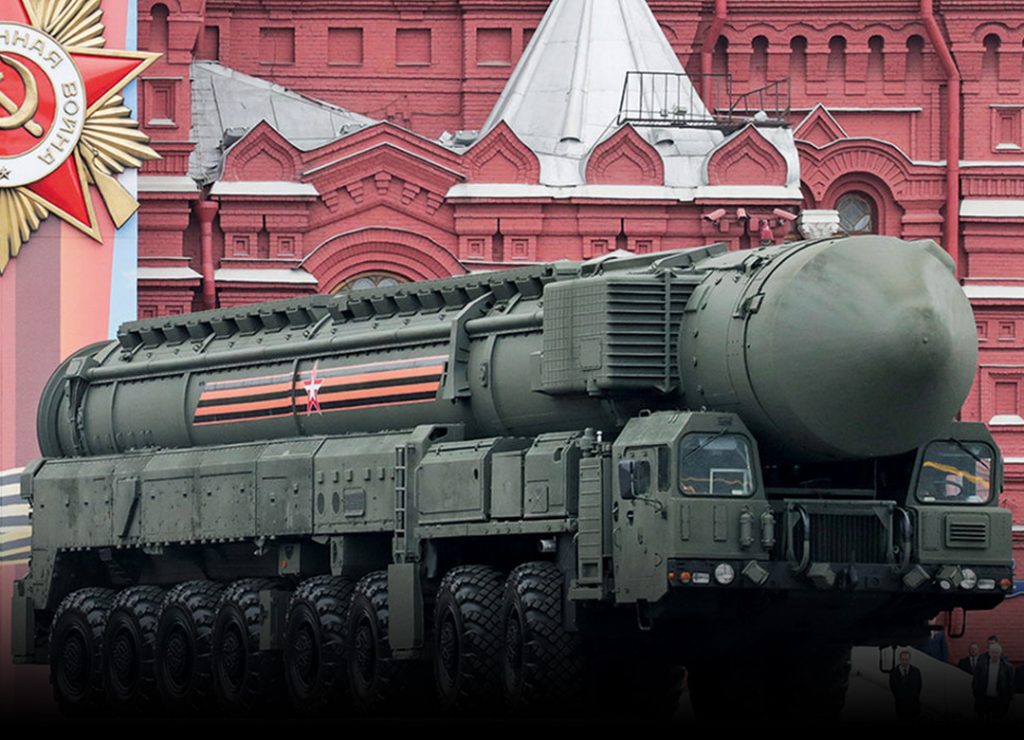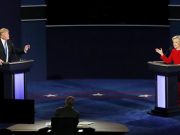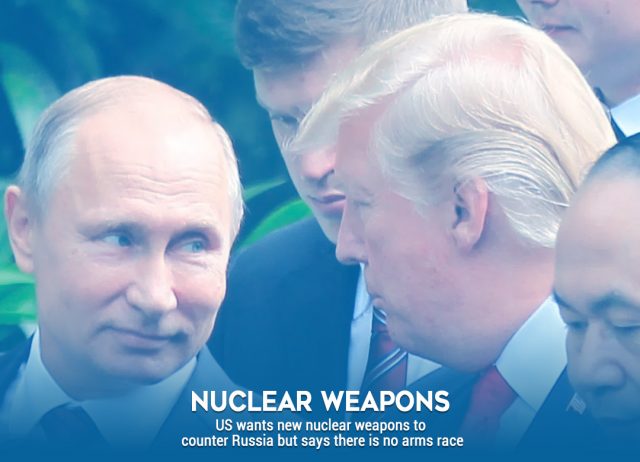Visiting Unites States Strategic Command last week, Secretary of Defense Mark Esper oversaw a chosen war game exercise in which Russian military forces used a tactical nuclear weapon against its European Allies shielded by NATO pushing he US to record retaliatory nuclear attack.
“The scenario included a European contingency where you are conducting a war with Russia and Russia decides to use a low yield limited nuclear weapon against a site on NATO territory and then you go through the conversation that you would have with the Secretary of Defense and the President ultimately, to decide how to respond,” a senior Department of Defense official told reporters Friday.
“They attacked us with a low yield nuclear weapon and in the course of the exercise we simulated responding with a nuclear weapon,” the official added.
While a defense official saw Thursday’s exercise as a routine demonstration, the hawks at Pentagon believe that Russia could use a tactical nuclear weapon in a conflict on NATO’s eastern flank. The table top war game exercise comes at a time when Pentagon is looking to bolster America’s nuclear deterrence which have included the addition of a new nuclear weapon for the first time in decades. The new nuclear ambitions have been criticized by Democratic lawmakers who saw the move as a trigger to a new global race for nuclear Arsenals.
The Defense Department on the hand has played down on the notion that United States is growing its nuclear capabilities and described the latest moves as merely a response to Russian efforts. Defense intelligence maintains that Russia owns to up 2,000 low yield smaller nukes which they can use in a variety of ways.

“They have about 2,000 of those, and it’s not just the numbers it’s the different types, they have ground air and sea launched, most of their tactical systems or conventional systems are dual-capable, so they have depth charges, they’re nuclear and they’re conventional, they have torpedoes that they fire from surface ships as well as subs, nuclear, conventional, their surface to air missiles–they have nuclear warheads for those, they have ground launched cruise missiles in violation of the INF treaty,” the senior Defense Department Official said, referring to the 1987 Intermediate-Range Nuclear Forces treaty that the US and its NATO allies accused Putin of violating.
In a scenario involving Russian forces pounding Europe with tactical nuclear weaponry, US until recently had to choose to either respond with conventional nuclear weapon or to come up with non-nuclear military action.
The nuclear disparity led the administration to develop and recently deploy the first new US nuclear weapon in decades, a submarine launched low yield weapon known as W76-II.
“Deterrence really comes down to a combination of credibility and capability, you have to have the resolve to respond to nuclear use at any level but you can’t just say that you have the resolve, you can’t just feel it, you have to show it, you have to show it someway,” the senior Defense Department official said.
“It’s not enough to say it you have to show it, and so the W-76-II was the least expensive, quickest way that we could put something in the field to show Russia that we had the capability in addition to the resolve to address any threat that they can pose to us,” he added.
Defense officials believe that tactical nuclear weapons are much more concerning than the newly developed nuclear torpedo and nuclear-powered cruise projectiles.
“What really kept us awake at night when we conducted a nuclear posture review was not these few new novel systems but was their huge inventory of non-strategic nuclear weapons, these are tactical nuclear weapons sometimes referred to as theater nuclear weapons,” the official said.
Defense officials say that 2018 nuclear posture review prompted the US to develop non-strategic nuclear arsenals as well as new sea-launched nuclear cruise missile. The defense experts currently in a review stage if decide to go by their decision of developing nuclear-capable Cruise missile, Pentagon believes will take 7 to 10 years to field it.
According to the senior Defense Department officials some of their Asian allies have welcomed the move and deployment of the submarine launched low yield nuclear weapon. However, some European allies according to top US military officials have raised the concerns that such an arsenal could lower the scope of existing nuclear weapon use.
“We discussed the low yield nuclear weapons, there was a difference of opinion on the low yield nuclear weapons, so we talked about our differences there, I explained our view point, they explained their view point,” the Vice Chairman of the Joint Chiefs of Staff Gen. John Hyten told CNN earlier this month.
“Their concerns were whether it would lower the threshold for the use of nuclear weapons or raise the threshold for them, that’s the question that they have,” Hyten said while adding “I strongly believe and I think we’ve talked about it before that it actually deters Russia from using nuclear weapons, and the point I made to both our allies from both Britain and France is that the sole reason we have nuclear weapons is to prevent others from using nuclear weapons.”
“I pointed out that our deployed stockpile is now less because of the low yield nuclear weapon,” the top military official added.
Despite the expansional activism on arms, US defense officials insist that the country is not in a new arms race with Moscow adding that the total number of nuclear weapons in the US arsenal has not increased and that any new weapons will replace those existing or at the verge of diffusion.
“We’re not adding to the size of the inventory, there’s no reason for them to increase the size of their strategic forces, they are already increasing the size of their tactical nuclear weapons,” the senior Defense Department official said.
When asked if the United States was in a new arms race with Russia, Hyten remarked, “I don’t like that term because if you’re in a competition and it’s involving the military there’s by definition a competition for arms so if you’re one nation versus another nation you want your military force structure to be better than the other force structure so arms race is kind of a false narrative because it describes something that’s always there.”















